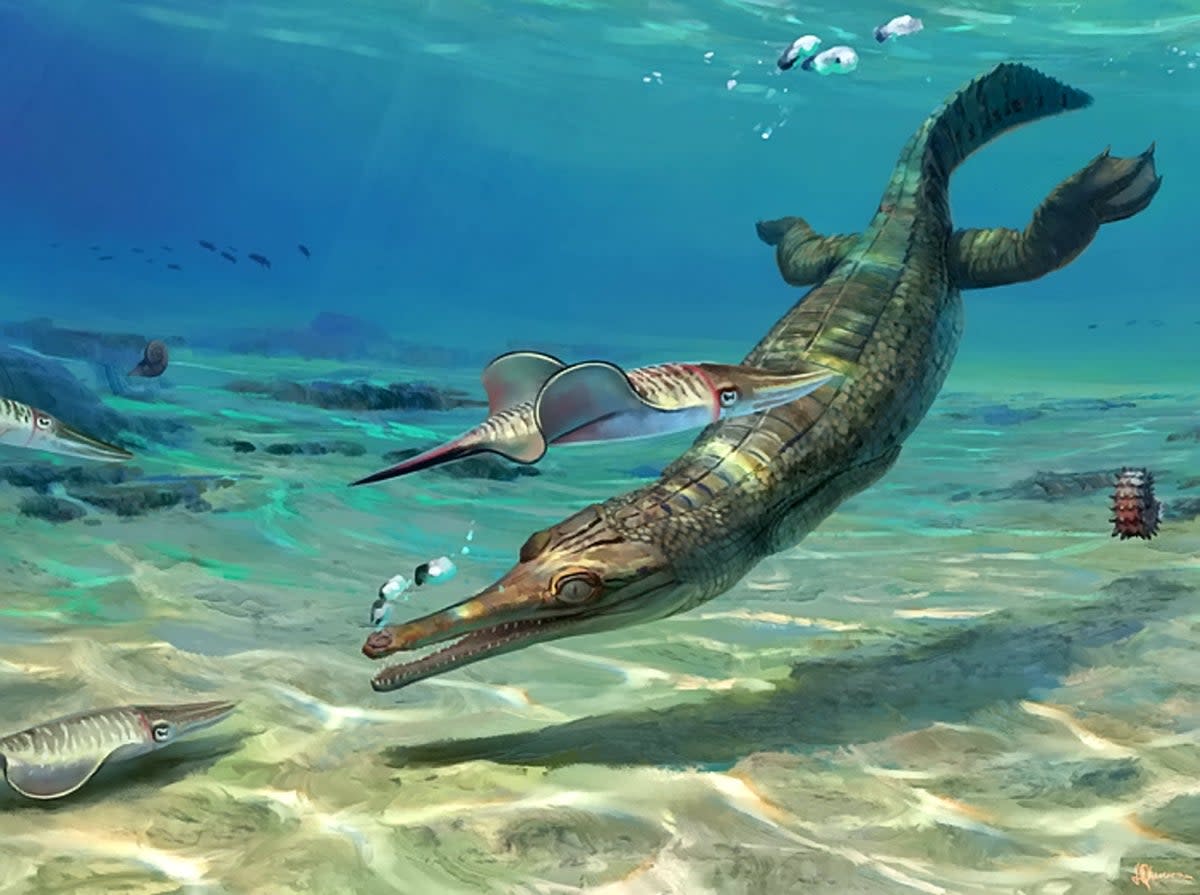185 million-year-old crocodile ancestor discovered on Britain’s Jurassic Coast

The fossil of a 185 million-year-old ancestor of crocodiles has been discovered on Britain’s Jurassic Coast.
Parts of the head, backbone, and limbs of a new thalattosuchian were found in Charmouth, Dorset.
The find, dating back to the early Jurassic period, is the only one complete enough to be named Turnersuchus hingleyae.
Thalattosuchians are described as an ancient ‘sister’ of modern-day crocodiles’ ancestors and are known as ‘marine crocodiles’ or ‘sea crocodiles’, despite the fact they are not members of Crocodylia, but are more distantly related.
It lived in the Jurassic Ocean and preyed along the coastline on marine wildlife. Due to its relatively long, slender snout it would have looked similar to modern gharial crocodiles found in major river systems of the northern Indian subcontinent.
Some thalattosuchians became very well adapted to life in the oceans, with short limbs modified into flippers, a shark-like tail fin, salt glands, and may have had the ability to have a live birth rather than lay eggs.
In the Turnersuchus found in Charmouth Mudstone Formation, many of these later features are yet to evolve.
The find helps fill a gap in the fossil record and suggests that thalattosuchians, with other crocodyliforms, should have originated around the end of the Triassic period.
This is about 15 million years before Turnersuchus lived.
Study co-author Dr Pedro Godoy, from the University of Sao Paulo in Brazil said: “Unlike crocodiles, this approximately two-metre-long predator lived purely in coastal marine habitats.
"And though their skulls look superficially similar to modern gharials, they were constructed quite differently”.
Thalattosuchians had particularly large supratemporal fenestrae – a region of the skull housing jaw muscles.
This suggests that Turnersuchus and other thalattosuchians possessed enlarged jaw muscles that likely enabled fast bites with most of their prey being fast-moving fish or octopus and squid.
It’s possible too, just as in modern-day crocodiles, that the supratemporal region of Turnersuchus had a thermoregulatory function to help buffer brain temperature.
The specimen, described in the Journal of Vertebrate Paleontology, is on display at the Lyme Regis Museum in Lyme Regis, Dorset.
The cliffs and the beach on the Jurassic Coast have become synonymous for such finds with the discovery of ichthyosaurs and plesiosaurs, as well as the best preserved and most complete dinosaur found so far in Britain, Scelidosaurus.


